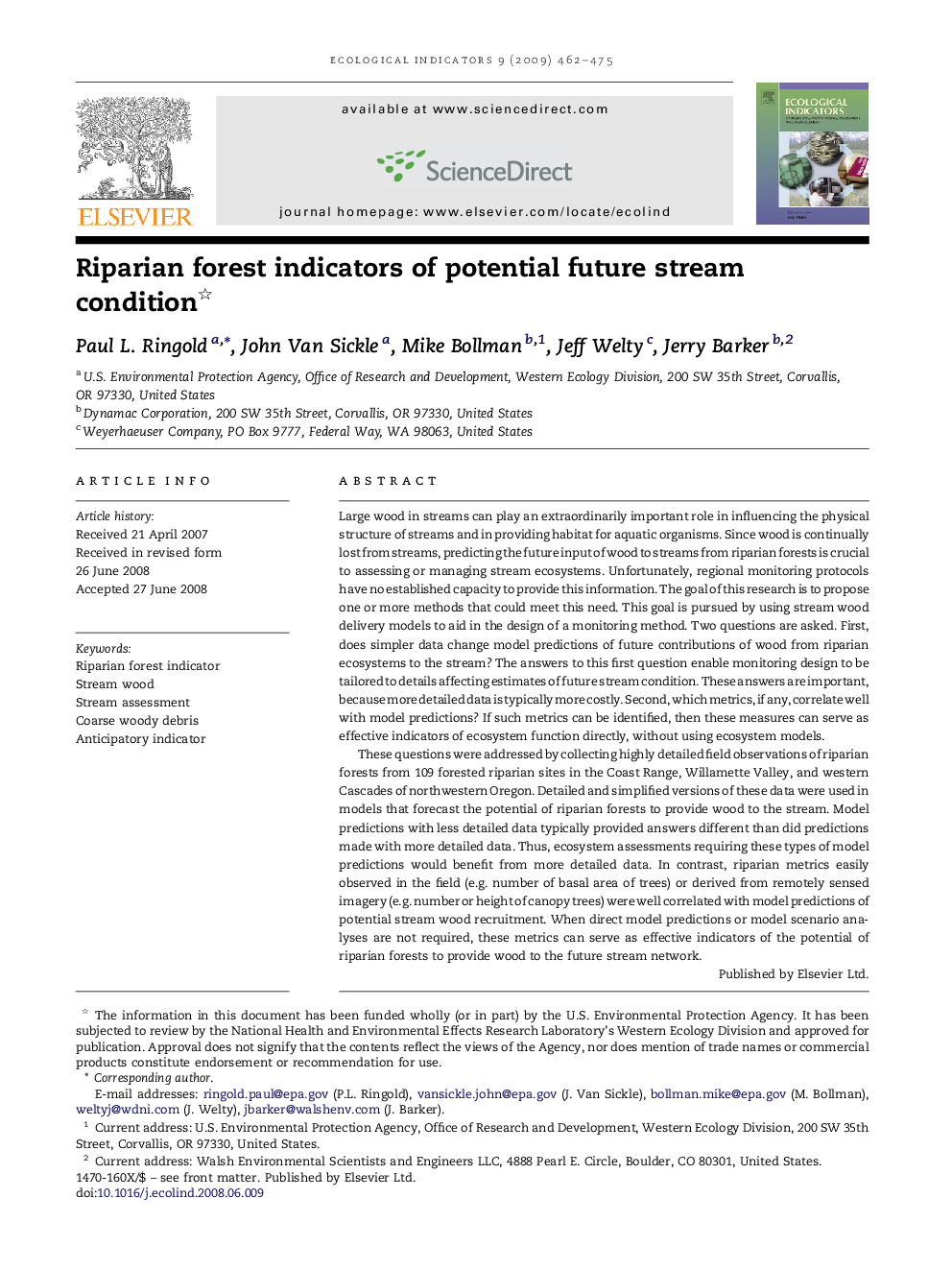| Article ID | Journal | Published Year | Pages | File Type |
|---|---|---|---|---|
| 4374466 | Ecological Indicators | 2009 | 14 Pages |
Large wood in streams can play an extraordinarily important role in influencing the physical structure of streams and in providing habitat for aquatic organisms. Since wood is continually lost from streams, predicting the future input of wood to streams from riparian forests is crucial to assessing or managing stream ecosystems. Unfortunately, regional monitoring protocols have no established capacity to provide this information. The goal of this research is to propose one or more methods that could meet this need. This goal is pursued by using stream wood delivery models to aid in the design of a monitoring method. Two questions are asked. First, does simpler data change model predictions of future contributions of wood from riparian ecosystems to the stream? The answers to this first question enable monitoring design to be tailored to details affecting estimates of future stream condition. These answers are important, because more detailed data is typically more costly. Second, which metrics, if any, correlate well with model predictions? If such metrics can be identified, then these measures can serve as effective indicators of ecosystem function directly, without using ecosystem models.These questions were addressed by collecting highly detailed field observations of riparian forests from 109 forested riparian sites in the Coast Range, Willamette Valley, and western Cascades of northwestern Oregon. Detailed and simplified versions of these data were used in models that forecast the potential of riparian forests to provide wood to the stream. Model predictions with less detailed data typically provided answers different than did predictions made with more detailed data. Thus, ecosystem assessments requiring these types of model predictions would benefit from more detailed data. In contrast, riparian metrics easily observed in the field (e.g. number of basal area of trees) or derived from remotely sensed imagery (e.g. number or height of canopy trees) were well correlated with model predictions of potential stream wood recruitment. When direct model predictions or model scenario analyses are not required, these metrics can serve as effective indicators of the potential of riparian forests to provide wood to the future stream network.
